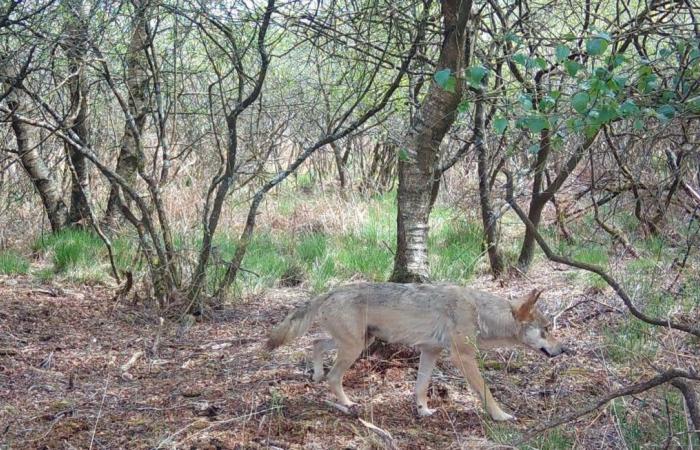
Each time a press article appears about the presence of the wolf, the mechanics are the same. In the days that followed, the associations or state agents responsible for monitoring animal populations saw an influx of more or less reliable testimonies, more or less blurry photos or more or less distant videos. All these inhabitants have the same conviction: they saw a wolf.
Sometimes this is the case, as in Gironde, where the presence of the wolf was established for the first time in a century. But in the vast majority of cases, these sightings are in fact those of dogs, wolfdogs or huskies. Let's not blame anyone for these errors, because it is often difficult to differentiate the true wild wolf from dogs that closely resemble them and from which they are descendants.
Wolves are still rare in our regions, including in areas like the Alpes-Maritimes where their presence has increased, to the great dismay of breeders. There were just over 1,000 in 2023. A falling figure which seems to confirm the need to reduce “authorized shootings”, according to environmental associations. If you ever come across a specimen during your walk in the forest, there is a good chance that it is not a “canis lupus” but just a “canis familiaris”. A dog, what? I was one of those who thought they saw him.
It was a rainy Sunday and we were returning from a shuffleboard tournament in Rennes when we saw the silhouette of an animal strongly resembling a wolf trotting along the road, very close to a shopping area in Chantepie . A dog? Yes, but why would he be alone here? Was it a wolf? At least it looked like it. In the car, we are all a little lost. Our conviction will be strengthened when we learn that, two days later, the same muscular animal will be observed nearby by a resident of Vern-sur-Seiche. We were then certain we had seen a wolf.
How to tell the difference?
Supporting photo, the specialists are nevertheless categorical. “It’s a dog. The color is too light and he does not have a clearly defined lip mask around his mouth,” explains an agent from the French Biodiversity Office. The animal in question was in fact a husky, probably abandoned and which had wandered for days around Chantepie. “He had no aggression, but he was very fearful,” confides Marilyne, who was able to approach the famous wolf dog. “It’s true that the resemblance was great. We can easily confuse them,” this animal lover tells us.
We are not the only ones to make this error, especially among the uninitiated. Moreover, even specialists admit that they sometimes struggle to tell the difference! “The resemblance is strong. Sometimes, the photos that we are sent are not of very good quality so we cannot make a decision,” recognizes Jean-Noël Ballot, of the Bretagne Vivante association. This animal enthusiast is part of the “Brittany Wolf Group” made up of naturalists wishing to “anticipate and support the return of the wolf” in the region. On their site, these enthusiasts have listed the “little tips” allowing you to differentiate the two species: the wolf's ears are shorter, just like its tail and its face mask is well designed. Its coat is often more nuanced, darker on the back.
“It’s an animal that arouses passions”
The description may be precise, but novices, including us, continue to send their hazardous testimonies. In Brittany, around ten reports are made on average each week. While the region, deprived of this predator for more than a century, has only seen “three to four wolves” pass through in recent years. Some were even able to be filmed, as in Berrien, in Côtes-d'Armor, causing a small wave of panic in the territories concerned. “The presence of the wolf is very media-driven, so we have people who think they see them everywhere. It's normal, it's a very political animal, which arouses passions, which fuels the imagination. With his return to the region, we expected to have this kind of psychosis,” continues Jean-Noël Ballot.
By clicking on“I accept”you accept the deposit of cookies by external services and will thus have access to the content of our partners.
More information on the Cookie management policy page
I accept
The naturalist is however categorical: “cohabitation is possible” with humans. “I do not deny the difficulties of breeders. We must support them, give them the means to protect their animals. The wolf remains a predator. But it can also help us regulate certain populations such as wild boars or deer. It’s a solution for cleaning up in the face of animals that no longer have a predator,” says the Finisterian. A way, too, to avoid having to organize hunts.





